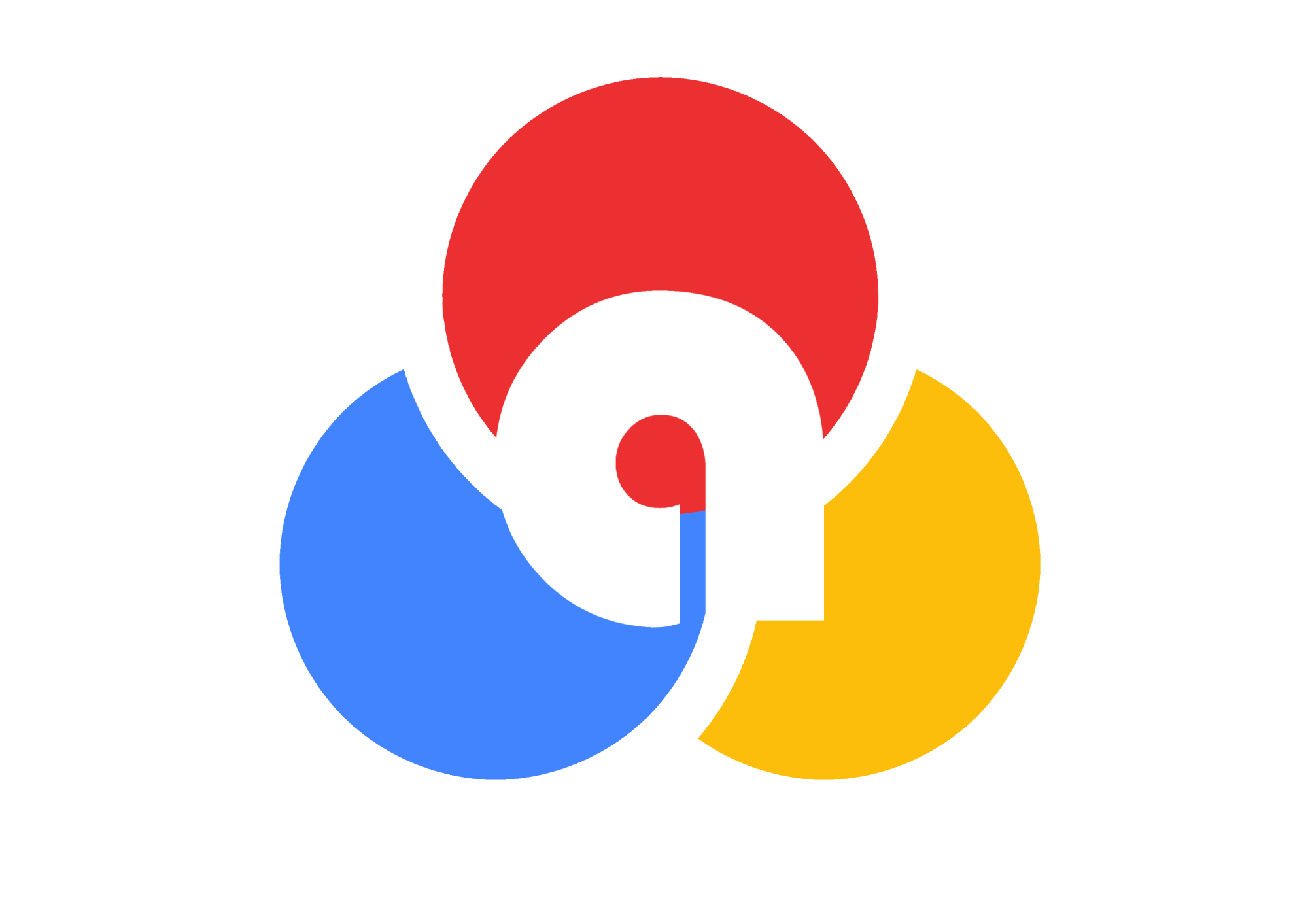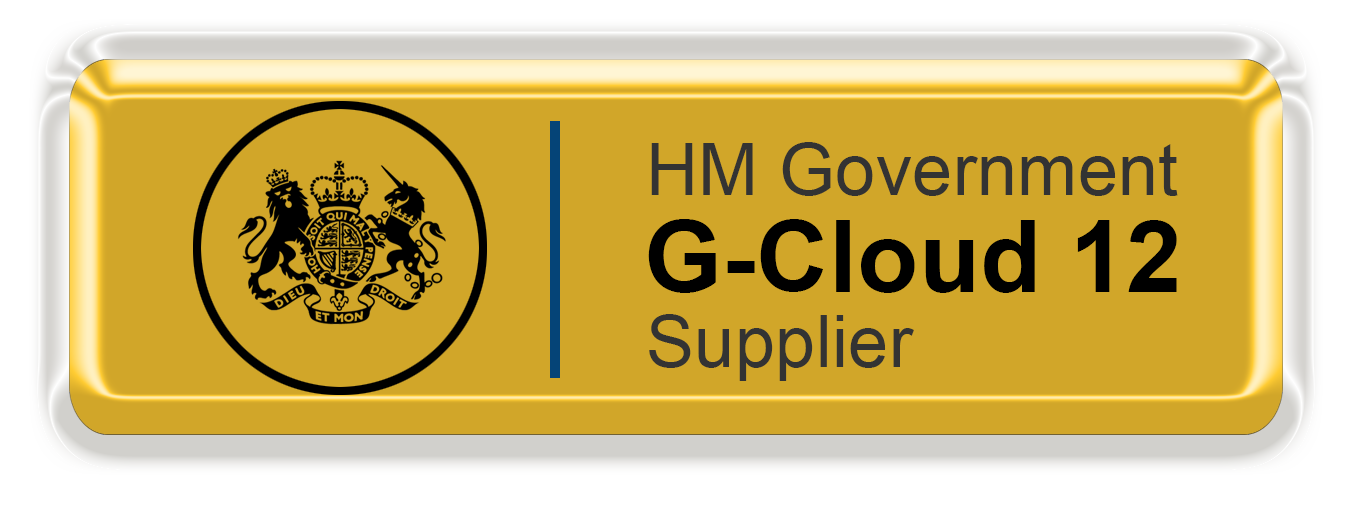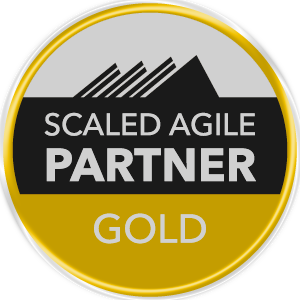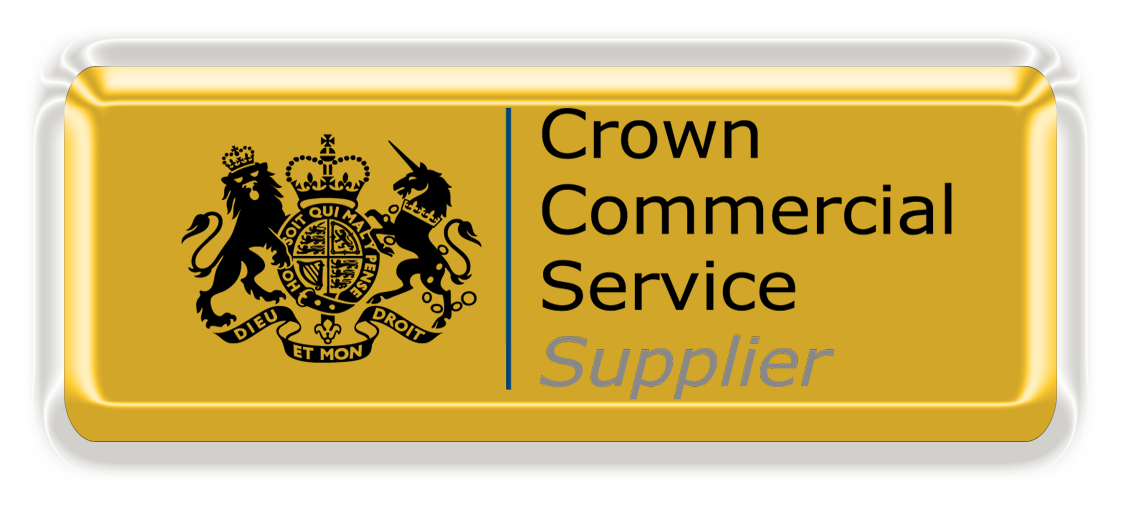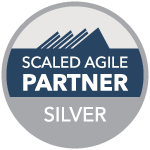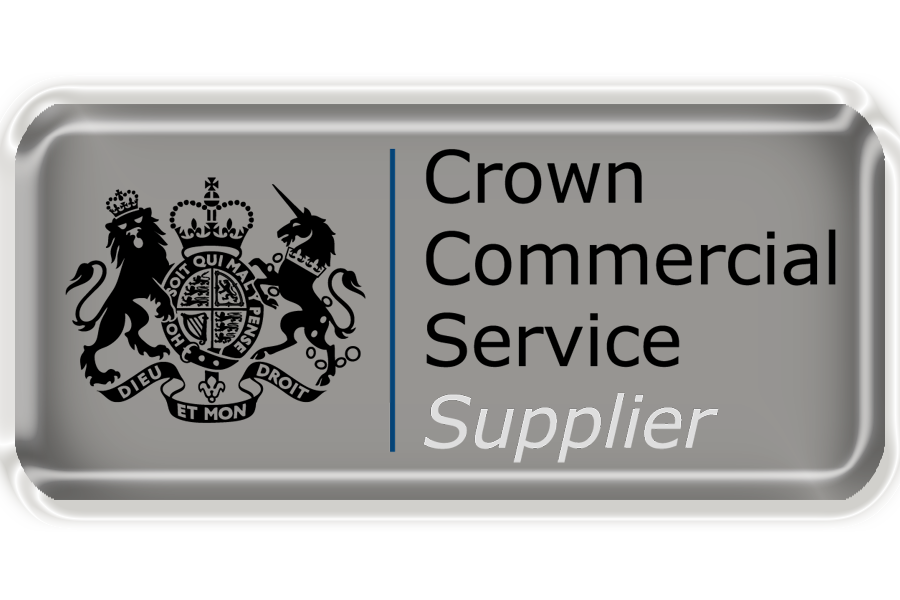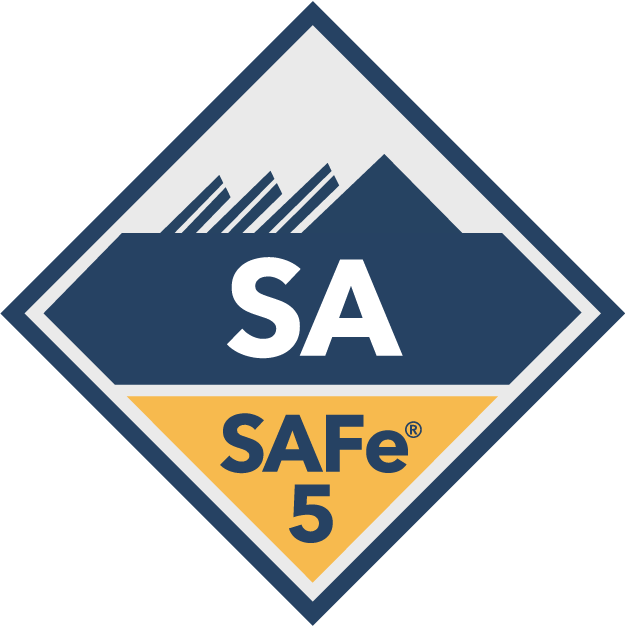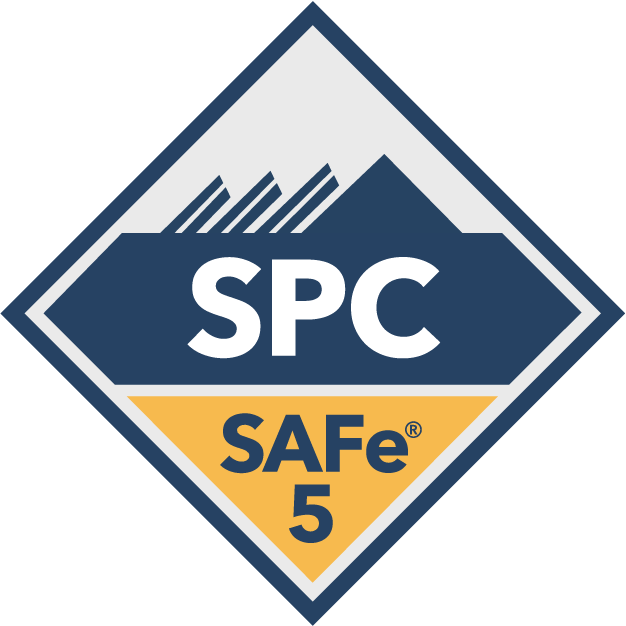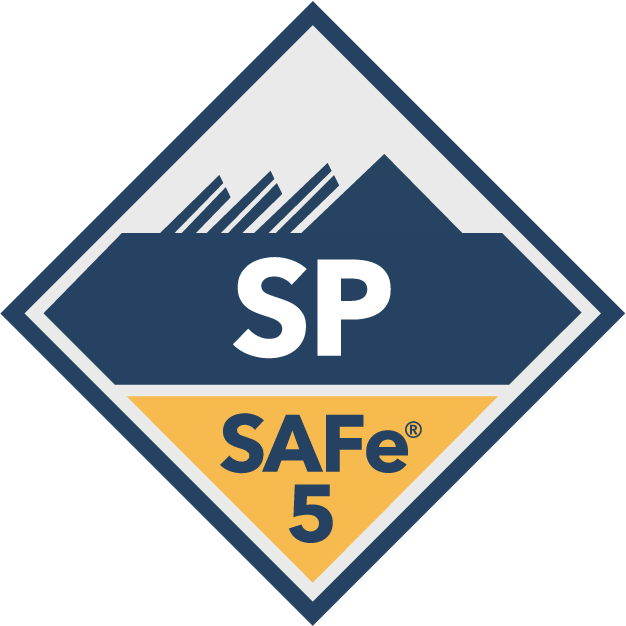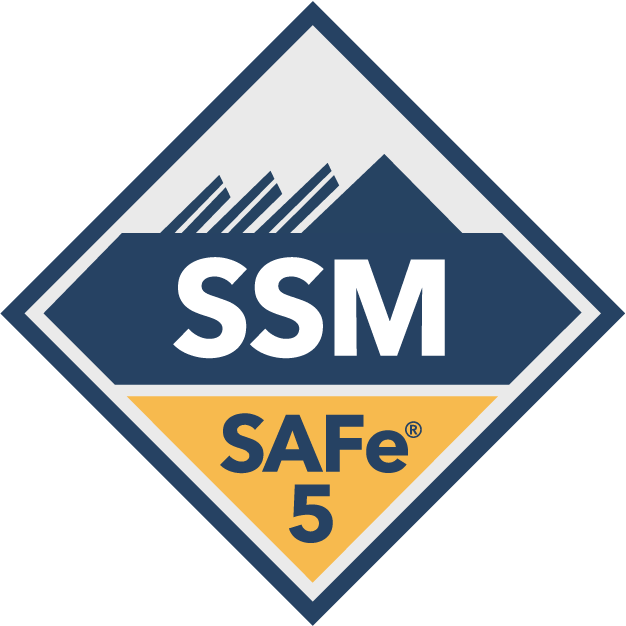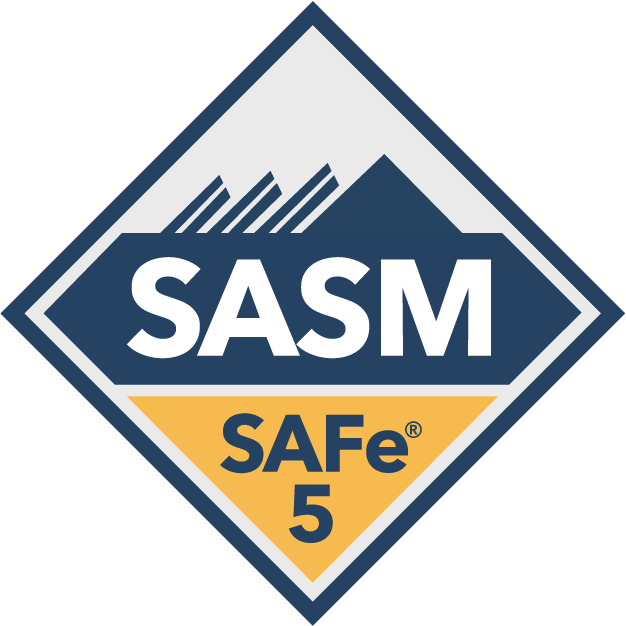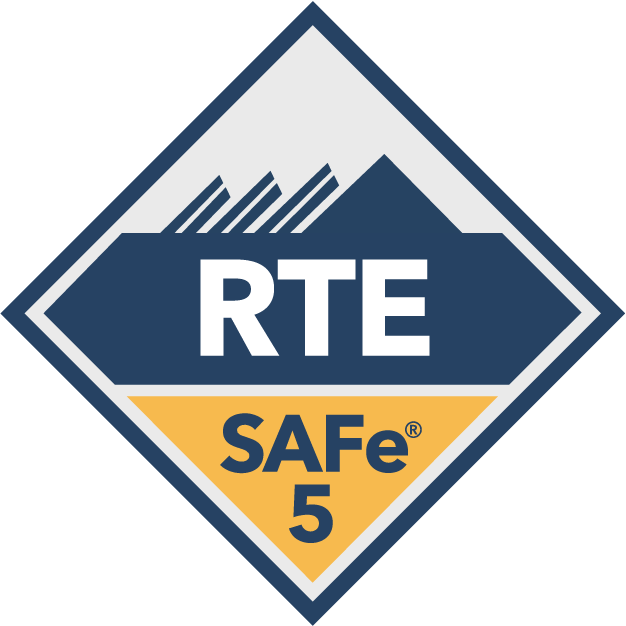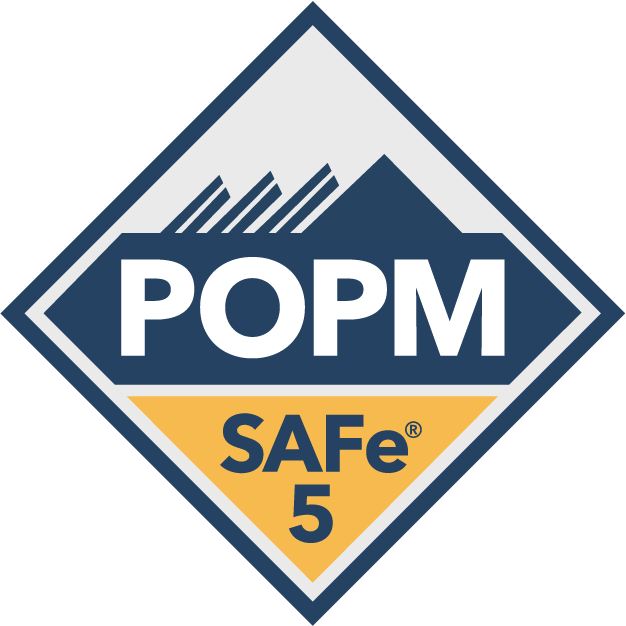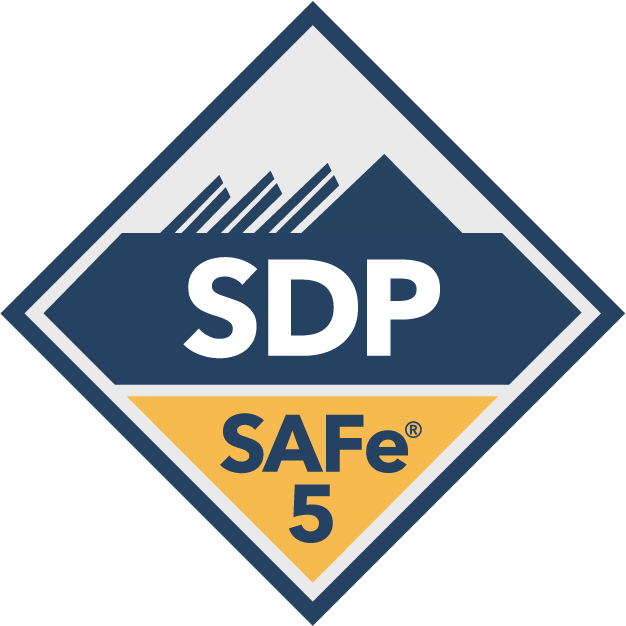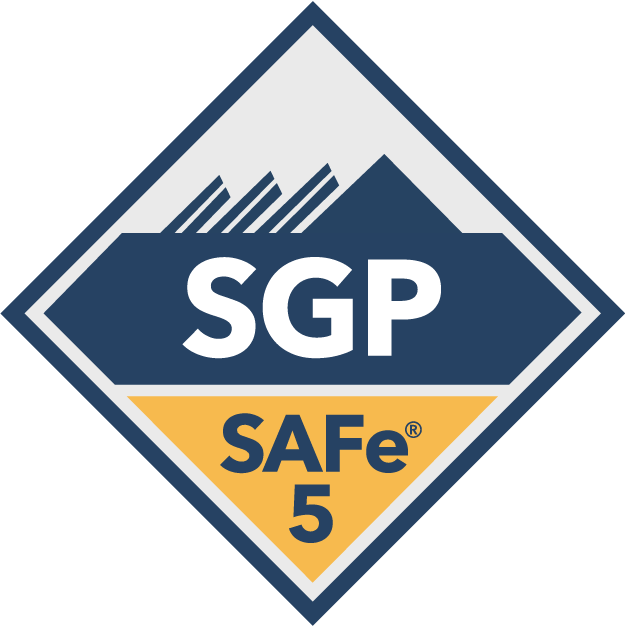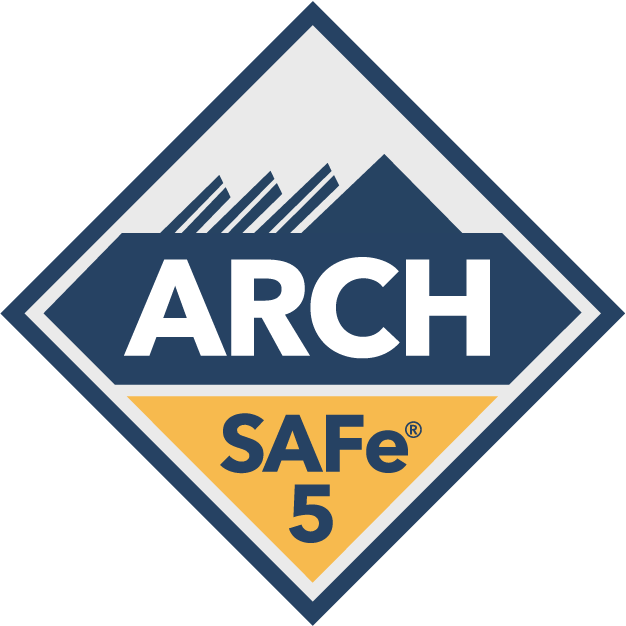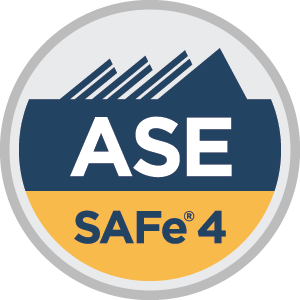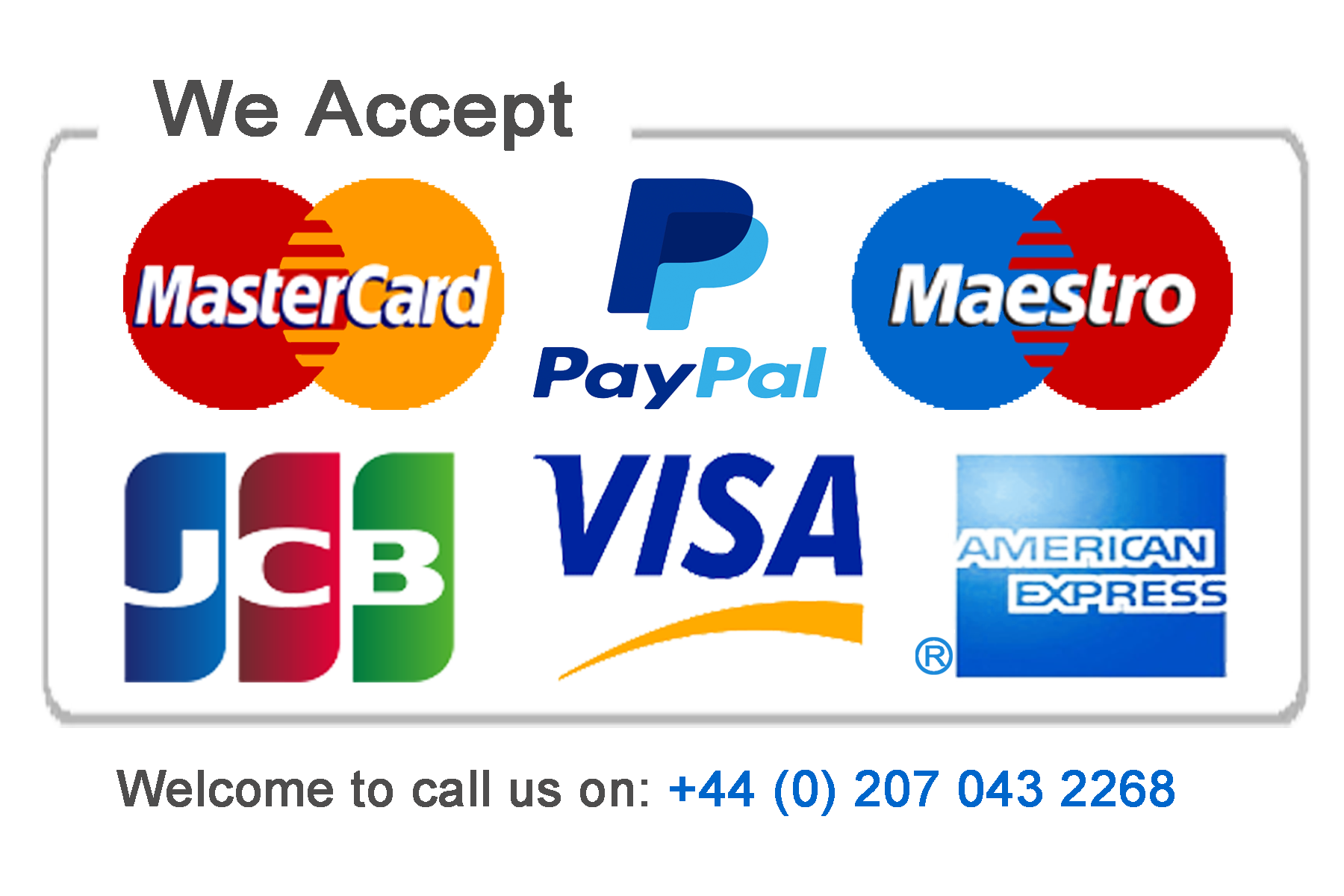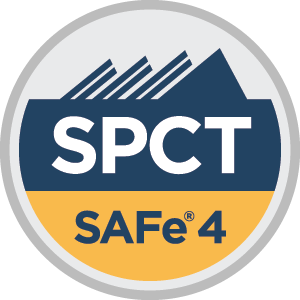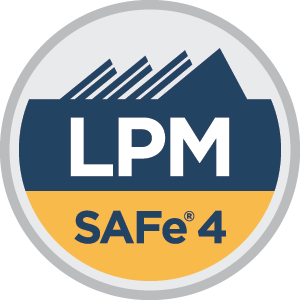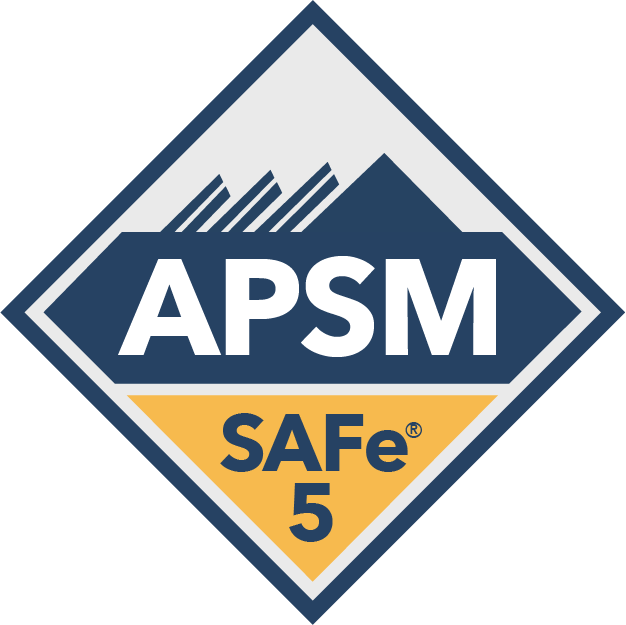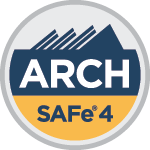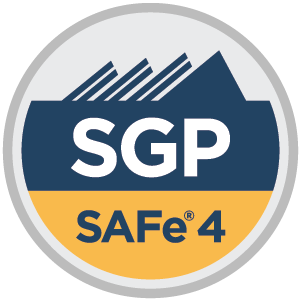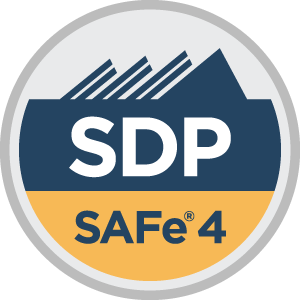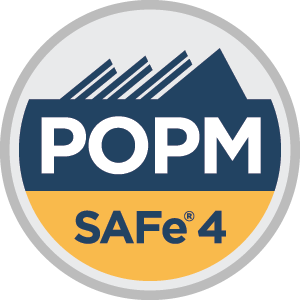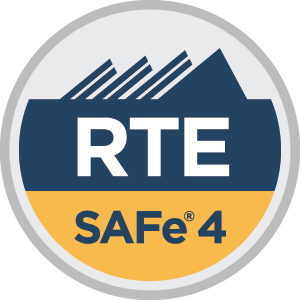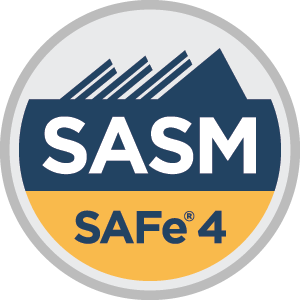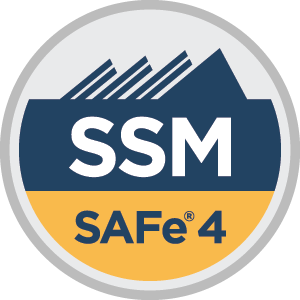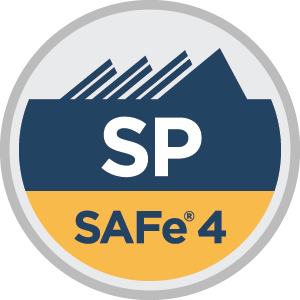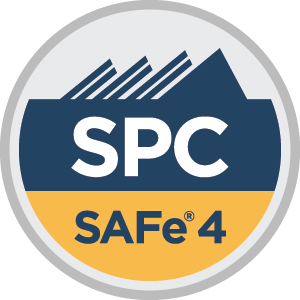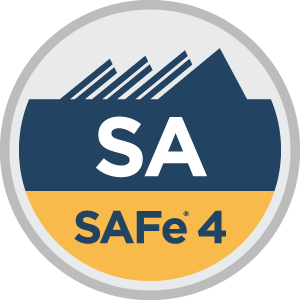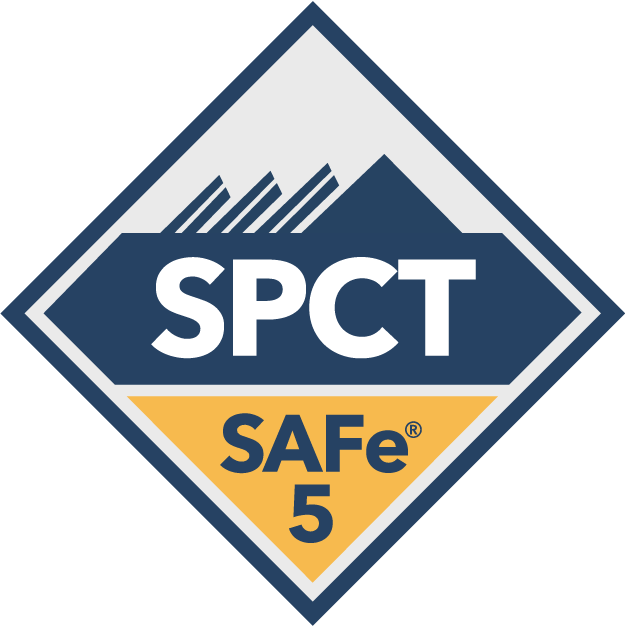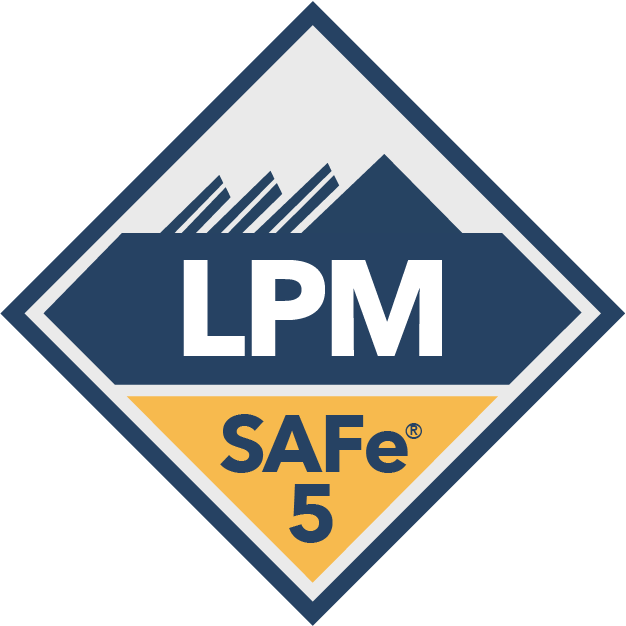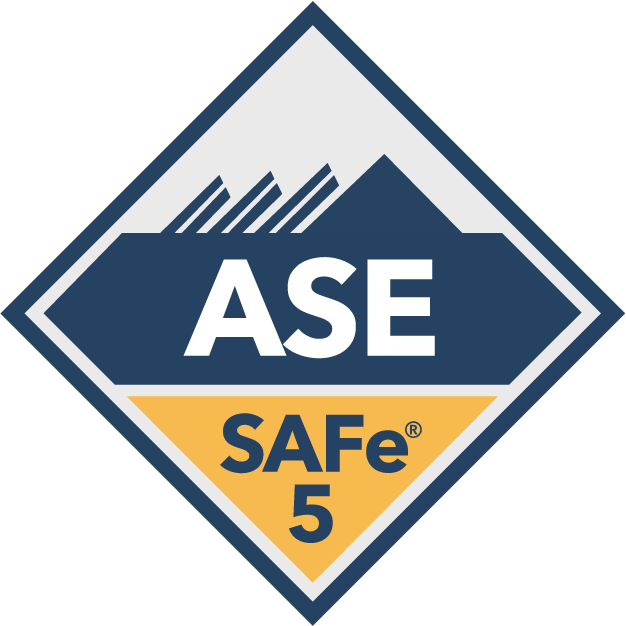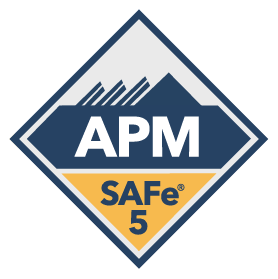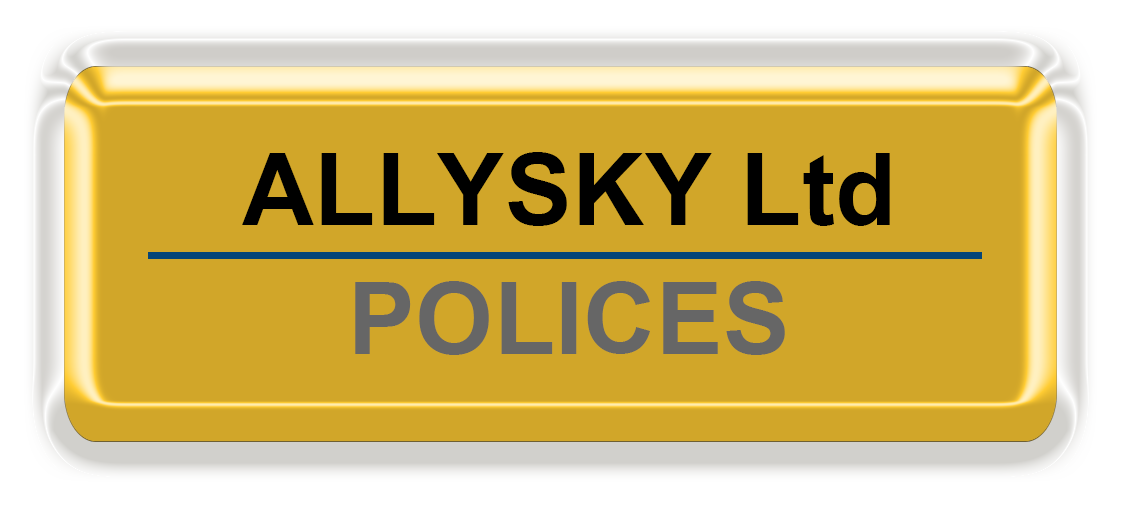SAFe for Lean Enterprises
The Lean Enterprise is a thriving digital age business that delivers competitive systems and solutions to its customers in the shortest sustainable lead time.
SAFe® for Lean Enterprises is a knowledge base of proven, integrated principles, practices, and competencies for Lean, Agile, and DevOps.
The Scaled Agile Framework applies the power of Agile, along with the contemporary knowledge found in systems thinking and Lean product development to help businesses address the significant challenges of developing and delivering enterprise-class software and systems in the shortest sustainable lead time. It is an online freely revealed knowledge base of proven success patterns for implementing Lean-Agile software and systems at enterprise scale.
The Business Benefits of SAFe
Enterprise, Distinguished Technologist Enterprises must learn how to adapt quickly to changing technology, and economic conditions or they will become extinct, no matter their size, strength or how smart they are. Even businesses that don’t consider themselves Information Technology (IT) or software companies—professional services, financial services, manufacturers, healthcare institutions, government agencies, and more—are now all highly dependent on their ability to produce new digital products and services. It is the mission of Scaled Agile Inc (SAI) is to assist these enterprises with the growth of their digital business through the development and publication of the SAFe knowledgebase, as well as accompanying certification, training, courseware, and a global network of more than 150 tooling and service partners.
Improves System Development Outcomes
Created from over a decade of field experience, SAFe draws from four primary bodies of knowledge: Agile development, Systems Thinking, Lean product development, and DevOps. It helps enterprises answer the following types of questions:
- How do we align business and technical goals?
- How do we deliver new value on a predictable schedule so that the rest of the business can plan?
- How do we improve the quality of our solutions and delight our customers?
- How do we scale Agile practices from the team to the program and business unit, and across the enterprise, to deliver better results?
- How do we organize people around value so that our programs deliver it effectively and avoid the delays inherent in a traditional, functional structure?
- How do we create an environment that fosters collaboration, innovation, and relentless improvement for our people?
- How can we change our culture so that it tolerates failure and rewards risk-taking and continuous learning? How can we help our teams improve without getting in the way?
By adopting SAFe—and applying its well-described set of values, principles, and practices—the enterprise can address these questions and realize greater business and individual benefits.
Now in its fifth major revision, SAFe 4.6 is improving business outcomes for companies of all sizes across the world. SAFe has produced dramatic improvements in time to market, employee engagement, higher quality, higher customer satisfaction, and overall improved economic outcomes. It also helps create cultures that are more productive, rewarding, and fun.
Figure 1. highlights these benefits as derived directly from Case Studies written by SAFe customers.
SAFe for Lean Enterprises
-
Figure 1. SAFe business benefits derived directly from case studies written by SAFe customers
Overview
While the benefits are clear, before an enterprise can gain these substantial business benefits, it must transform itself into a Lean enterprise. This transformation requires developing ‘enterprise competencies’ that enable a new style of leadership, new ways of thinking and working, and a culture focused on value delivery and continuous improvement.
SAFe is an extensive body of knowledge that describes the roles, responsibilities, artifacts, and activities necessary to implement enterprise-scale Lean-Agile development. SAFe synchronizes alignment, collaboration, and delivery for large numbers of Agile teams. Scalable and configurable, SAFe supports smaller-scale solutions employing 50–125 practitioners, as well as complex systems that require thousands of people.
The SAFe Framework website home page features an interactive ‘Big Picture’ graphic, which is a visual overview of the Framework and is the primary user interface to the database. Each icon of the image is clickable and provides an entry to the extensive SAFe knowledge base which includes: the Five Core Competencies of the Lean Enterprise, the four configurations that support a full range of development and business environments, and the foundational principles, values, mindset, roles, artifacts and implementation elements that makes up the SAFe framework. Components of the SAFe framework are described in more detail in the following paragraphs.
Five Core Competencies of the Lean Enterprise
Version 4.6 of SAFe adds the Five Core Competencies of the Lean Enterprise, which are now the primary lens for understanding and implementing SAFe. Each Lean Enterprise competency is a set of related knowledge, skills, and behaviors, which together enable enterprises to achieve the best quality and value in shortest sustainable lead time. Each competency is briefly described next.

- The Lean-Agile Leadership competency describes how Lean-Agile Leaders drive and sustain organizational change by empowering individuals and teams to reach their highest potential. They do this by learning, exhibiting, teaching, and coaching SAFe’s Lean-Agile Mindset, values, principles, and practices. The result is happier, more engaged employees, and increased productivity and innovation.
- The Team and Technical Agility competency describes the critical skills and Lean-Agile principles and practices that are needed to create high-performing Agile teams who produce high-quality, well designed technical solutions. The result is increased productivity, faster time-to-market, and predictable delivery of value.
- The DevOps and Release on Demand competency describes how implementing DevOps, and a continuous delivery pipeline provides the enterprise with the capability to release value, in whole or in part, at any time necessary to meet market and customer demand. This enables the organization to lower development costs, reduce risk, and outmaneuver the competition.
- The Business Solutions and Lean Systems Engineering competency describes how to apply Lean-Agile principles and practices to the specification, development, deployment, and evolution of large, complex software applications and cyber-physical systems.
- The Lean Portfolio Management competency aligns strategy and execution by applying Lean and systems thinking approaches to strategy and investment funding, Agile portfolio operations, and governance. These collaborations give the enterprise the ability to execute existing commitments reliably and to better enable innovation.
Also, in SAFe 4.6 is a new area of guidance for the Government. Based upon the foundation and principles of SAFe, the guidance emphasizes:
- Adapting governance practices to support agility and Lean flow of value
- Modifying acquisition practices to enable Lean-Agile development and operations
- Applying Lean estimating and forecasting on cadence
- Adopting Lean budgeting aligned to value streams
- Transitioning from projects to a Lean flow of epics
- Aligning technology investments with agency strategy
- Creating high performing teams of government teams and contractors
- Building a foundation of Lean-Agile values, principles, and practice.
SAFe Configurations
SAFe supports the full range of development environments with four out-of-the-box configurations. The configuration selector has been simplified and redesigned in Version 4.6 and is illustrated in Figure 2. The configurations are described below.
- Essential SAFe
- Portfolio SAFe
- Large Solution SAFe
- Full SAFe
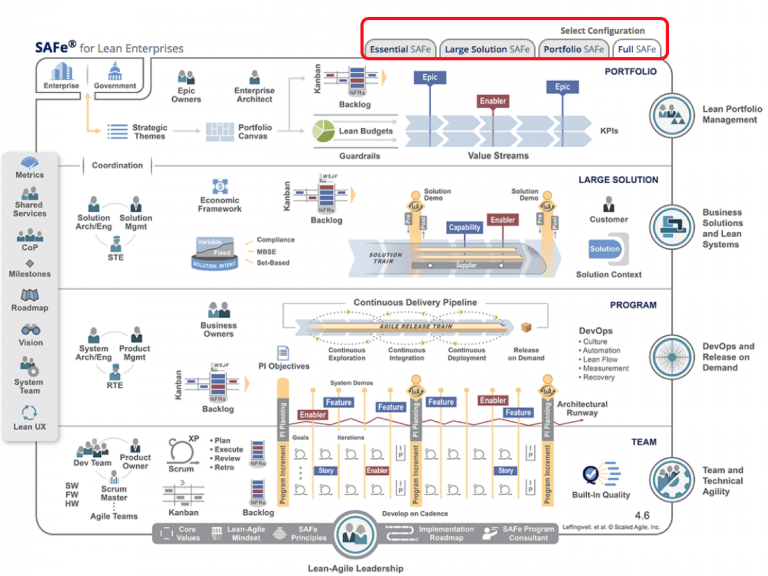
-
Figure 1. Configurable SAFe
Essential SAFe
The Essential SAFe configuration is the basic building block for all SAFe configurations and is the simplest starting point for implementation. It provides the Lean-Agile Leadership competency, the Team and Technical Agility competency, and the DevOps and Release on Demand competency.
SAFe is anchored by an organizational structure called the Agile Release Train (ART), where Agile teams, key stakeholders, and other resources are dedicated to an important, ongoing solution mission.
Figure 3. illustrates this cross-functional organization, which is optimized to facilitate the flow of value from ideation through deployment and release, and into operations.

-
Figure 3. Agile Release Trains are fully cross-functional
Essential SAFe includes the team and program constructs, as shown in Figure 4.
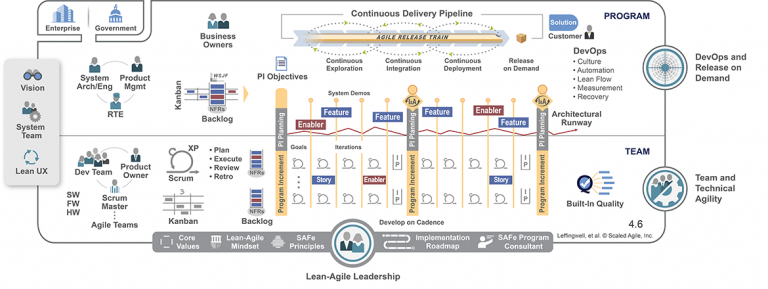
-
Figure 4. Essential SAFe configuration
Large Solution SAFe
The Large Solution SAFe configuration introduces the Business Solutions and Lean Systems Engineering competency, which supports those building the largest and most complex solutions that require multiple Agile Release Trains and Suppliers, but do not require portfolio-level considerations.
Such solution development is common for industries like aerospace and defense, automotive, and government, where the large solution—not portfolio governance—is the primary concern.
The Solution Train organizational construct helps enterprises that face the biggest challenges—building large-scale, multidisciplinary software, hardware, cyber-physical, and complex IT systems. Developing these solutions requires additional roles, artifacts, events, and coordination, as Figure 5. illustrates.

-
Figure 5. Large Solution SAFe configuration
Portfolio SAFe
The Portfolio SAFe configuration provides the Lean Portfolio Management competency which aligns portfolio execution to enterprise strategy. It organizes development around the flow of value through one or more value streams.
Portfolio SAFe provides business agility through principles and practices for portfolio strategy and investment funding, Agile portfolio operations, and Lean governance.
In the large Enterprise, there may be multiple SAFe portfolios.
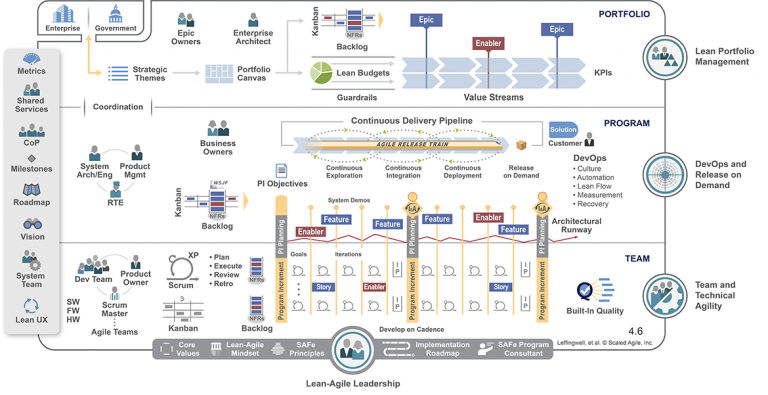
-
Figure 6. Portfolio SAFe configuration
Full SAFe
The Full SAFe configuration includes all Five Core Competencies of the Lean Enterprise. It is the most comprehensive version of the Framework and supports enterprises that build and maintain a portfolio of large and complex solutions.
In the largest enterprises, multiple instances of various SAFe configurations may be required.

-
Figure 7. Full SAFe configuration
The Spanning Palette
The Spanning Palette contains various roles and artifacts that may apply to a specific team, program, large solution, or portfolio context.
An essential element of SAFe’s flexibility and configurability, the spanning palette permits organizations to apply only the items needed for their configuration. Figure 8 illustrates two versions of the spanning palette.
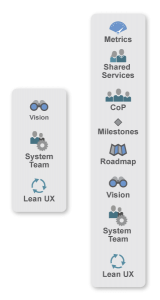
-
Figure 8. Spanning Palette
The leftmost figure is used by the Essential SAFe configuration, while the rightmost one serves all other configurations. However, since SAFe is a framework, enterprises can apply any of the elements from the larger spanning palette to Essential SAFe.
Below is a brief description of each spanning palette element:
- Metrics – The primary measure in SAFe is the objective measurement of working solutions. Moreover, SAFe defines some additional intermediate and long-term measures as well, metrics that teams, programs, and portfolios can use to measure progress.
- Shared Services – Represents the specialty roles that are necessary for the success of an ART or Solution Train, but that cannot be dedicated full time to any specific train.
- Community of Practice (CoP) – A community of practice is an informal group of team members and other experts, acting within the context of a program or enterprise, that has a mission of sharing practical knowledge in one or more relevant domains.
- Milestones – A milestone is used to track progress toward a specific goal or event. SAFe describes fixed-date, Program Increment (PI) and learning milestones.
- Roadmap – The roadmap communicates planned ART and value stream deliverables and milestones over a timeline.
- Vision – The vision describes a future view of the solution to be developed, reflecting customer and stakeholder needs, as well as the Features and Capabilities which are proposed to address those needs.
- System Team – The system team is a special Agile team that provides assistance in building and using the continuous delivery pipeline, and where necessary, validating full end-to-end system performance.
- Lean User Experience (UX) – Lean UX is the application of Lean principles to user experience design. It uses an iterative, hypothesis-driven approach to product development, through constant measurement and learning loops (build-measure-learn).
The Foundation
The Foundation contains the supporting principles, values, mindset, implementation guidance, and leadership roles needed to deliver value successfully at scale.
Each foundation element, as shown in Figure 9, is briefly described below.

-
Figure 9. SAFe Foundation/
- Lean-Agile Leaders – Management has the ultimate responsibility for business outcomes. Leaders are trained in SAFe, and in turn become trainers of, these leaner and agiler ways of thinking and operating. To this end, SAFe describes a new style of leadership exhibited by the enterprise’s new ‘lean-thinking manager-teachers’.
- Core Values – Four core values of Alignment, Built-In Quality, Transparency, and Program Execution define the belief and value system for SAFe.
- Lean-Agile Mindset – Lean-Agile Leaders are lifelong learners and teachers that understand, embrace and foster Lean and Agile principles and practices across the enterprise.
- SAFe Principles – SAFe practices are grounded in nine principles that synthesize Agile methods, Lean product development, DevOps, systems thinking, and decades of field experience.
- Implementation Roadmap – Implementing the changes necessary to become a Lean-Agile technology enterprise is a substantial change for most companies. SAFe provides an implementation roadmap to help guide organizations on this journey.
- SAFe Program Consultants (SPCs) – SPCs are change agents who combine their technical knowledge of SAFe with an intrinsic motivation to improve their company’s software and systems development processes.
